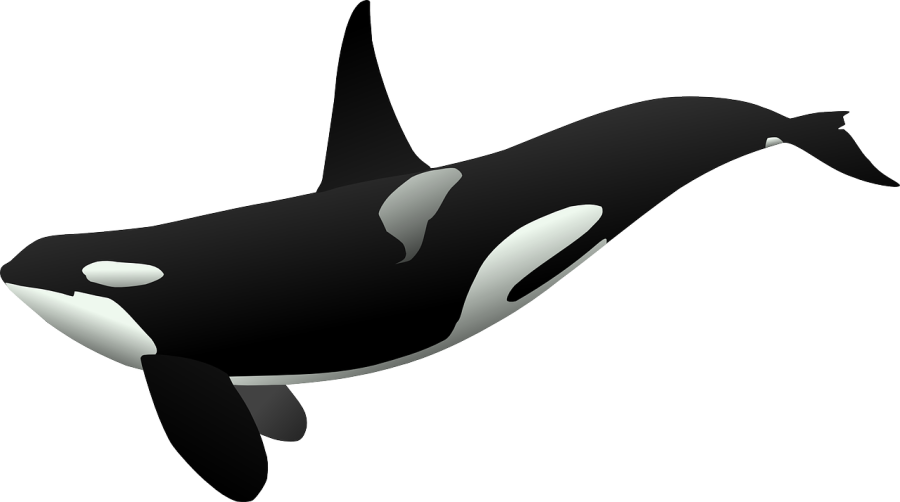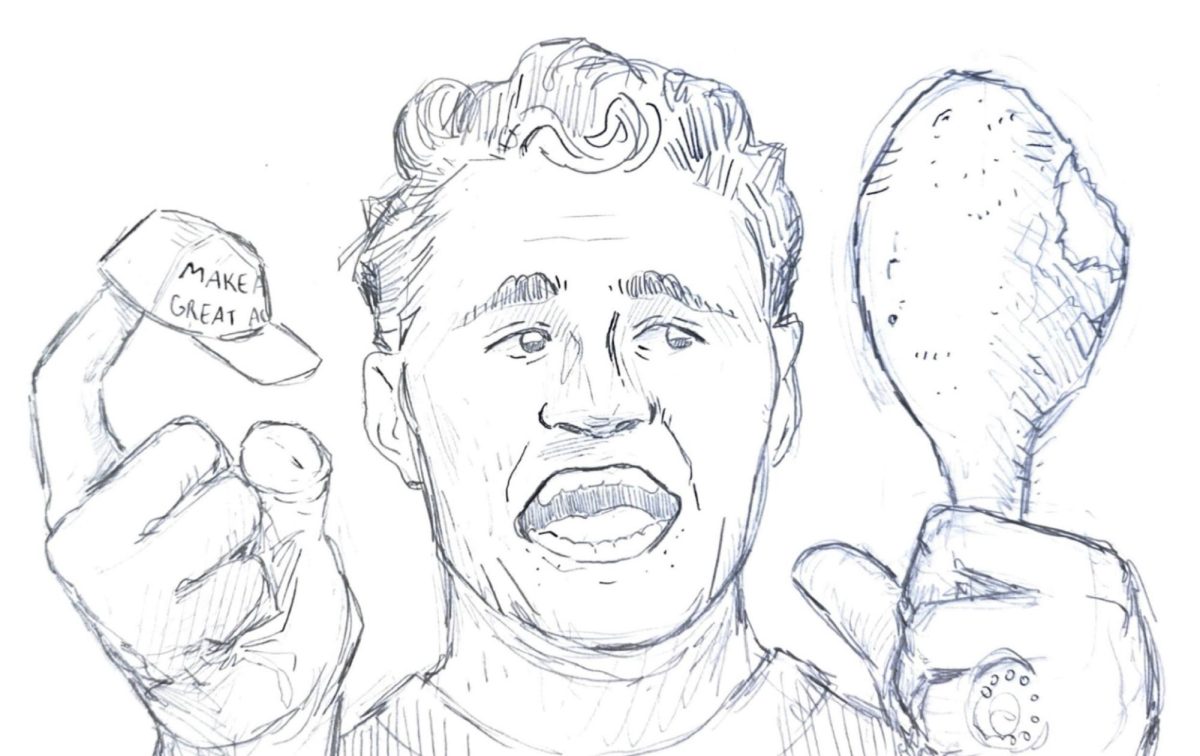In response to public accusations of animal rights abuse after Blackfish documentary, Seaworld has recently announced its decision to end the theme park’s breeding program for killer whales.
Decision to Halt Breeding Program Demonstrates the Initiative of SeaWorld to Reform Treatment of Orcas
Three years ago, the story of SeaWorld’s captive orca Tilikum was illuminated by “Blackfish,” a documentary that highlighted the mistreatment of killer whales at SeaWorld and fueled the public pressure for the park to change its ways. SeaWorld President and CEO Joel Manby’s recent decisions both to stop the orca breeding program and to phase out orca shows displays a definitive response to the adverse publicity of “Blackfish” and the constant protesting by animal-rights activists. With this announcement, SeaWorld is taking the first steps necessary toward completely curtailing the use of orcas for public enjoyment, demonstrating the power of protest and the urgent need to take further action.
Manby’s announcement yielded considerable praise from SeaWorld critics, including the director of “Blackfish,” Gabriela Cowperthwaite, who had noted that this moment “marks truly meaningful change.” It’s no surprise that SeaWorld made distinct modifications to its business model. According to Forbes, with vacationers increasingly bypassing SeaWorld and regulators encircling the shows and investors punishing the enterprise, it is clear that the documentary made a significant impact on the SeaWorld’s future.
In the same release, Manby elucidates SeaWorld’s renovation as more of an “educational experience,” emphasizing marine-science study, research and rescue operations. The park’s policy change is highly influential because it may encourage other zoos, circuses and parks to reconsider their policies on animal captivity. As stated by Senior Vice President of PETA Lisa Lange, due to “Blackfish” and its effect on SeaWorld’s popularity, public opinion on exploiting animals for entertainment has dramatically changed. Thus, SeaWorld’s decision signals the impact that voices of dissent can make.
While efforts to move away from degrading shows and toward marine-life education are steps in the right direction, they are still only first steps. In fact, according to PETA and Rep. Adam Schiff (D-Calif.), the fact remains that as long as SeaWorld keeps its orcas in captivity, their physical and psychological problems will perpetuate. Schiff recently unveiled the Orca Responsibility and Care Advancement Act, which would outlaw breeding and importing orca whales into the U.S. for the purpose of public exhibition. Such bills prove that much more needs to be done to create safe ocean sanctuaries for these highly intelligent mammals. Nonetheless, SeaWorld’s efforts and encouragement of other parks to follow suit show promise for the future of animal rights advocacy.
— AARTHI VENKAT Staff Writer
Public Announcement to End Breeding Efforts is Empty, Without Concrete Plan to Change Business Malpractices
SeaWorld’s recent announcement that it will end its breeding program for killer whales — meaning the current orca population will be the last captive generation — has been met with public praise. This historic change has come after the violent deaths of two trainers and rising public sentiment against the unnatural practice of capturing and training whales. Despite the promise this decision shows for animal rights, this announcement must be followed up with a comprehensive plan of action for complete reform.
Following SeaWorld’s statement, former senior killer whale trainer John Hargrove voiced his optimism about the move on Vox. As a witness of SeaWorld’s profit-driven management of the orca program, Hargrove wrote that many questions are left unanswered by this decision. For this to be a historic moment, he argues that there need to be clear protocols to prevent captive whale pregnancy and that there should be transparency about any side deals that have made this possible. Further, Hargrove points out that at this moment SeaWorld still has one pregnant whale who was artificially inseminated before the public announcement ending the breeding program. This shows how SeaWorld is still intent on maintaining its orca program, and how this announcement was calculated to foster public trust again.
SeaWorld has made announcements such as this in the past, without following them up with significant changes. In 2014, following the release of the critical documentary “Blackfish,” SeaWorld announced plans to expand its orca enclosure. However, in an article in The Wire, activists noted the obvious intent to reverse public backlash resulting from “Blackfish” — not to change the park’s basic business model. SeaWorld is primarily a profit-driven themepark, though its previous and current press statements have emphasized its scientific and educational role in promoting conservation. With the release of “Blackfish,” SeaWorld wrote to CNN saying that the film disregarded the park’s renown as a “zoological establishment.” Even currently, CEO Joel Manby wrote in a guest column in the Richmond Times that SeaWorld is a “zoological organization” committed to wildlife conservation, glossing over the entertainment characteristics of the parks. Clearly, SeaWorld is very invested in its public image, and though this announcement presents hope for the future, it remains to be seen whether the theme park will break from its past pattern of talk and no action.
— SOPHIE OSBORN Staff Writer









Teresa Wagner • Mar 28, 2016 at 3:17 pm
Until all SeaWorld’s marine mammals are released into sea pen sanctuaries the activist pressure upon them will continue and increase. Manby’s and HSUS’s Pacelle faux concern about the orcas is quite transparent. What they still haven’t learned is that those who deeply care about these animals are also intelligent. Unlike the visitors to SeaWorld who seem to believe whatever rhetoric some trainer or employee tells them (such as the lies that orcas in the wild only live until they’re 30, that wild orcas also have flaccid dorsal fins, that there has never been a successful release of an orca to either a sea pen or the ocean, etc.), we actually read and fact check, relentlessly, and pass on the information to the public.
Joey Racano • Mar 28, 2016 at 9:51 am
All Orcas must go to sea pens, including Lolita from the Miami Seaquarium. Please help make that a reality by staying vocal and engaged. On Facebook: Free Tilly
Joey Racano • Mar 28, 2016 at 9:48 am
http://petitions.moveon.org/sign/29-seaworld-orcas-sea.fb50?source=c.fb&r_by=2825015
AJ • Mar 27, 2016 at 10:32 pm
Seaworld has a long road ahead of them. The announcement was just the very first step. Investigation by the IMMP showed that Seaworld used invasive breeding drugs on female orcas so they would produce more babies for their shows, essentially making their orcas baby-making machines. Although breeding has been discontinued for orcas, they’re still using these methods on dolphins and pilot whales. They must stop this abhorrent practice. If they have a conscience, they will stop using ALL marine animals in their shows and/or “exhibits” (SeaWorld’s claim that they’re a zoo is laughable) and use their profits to build sea sanctuaries in consultation with expert orca biologists who aren’t employees of Seaworld (Seaworld research is almost exclusively on breeding). That’s the LEAST Seaworld can do to make up for their actions.